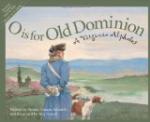The emblem of hospitality that tops the central roof is truly characteristic of the spirit within. Old colonial worthies, foreign dignitaries, presidents and their cabinets, house-parties of “Virginia cousins,” and “strangers within the gates”—all have known the open hospitality of Brandon. And the two latest strangers now moved on assured of kindly welcome at the doorway.
Entering Brandon from the landward front, we found ourselves again in the large central hall. It is divided midway by arches resting on fluted Ionic columns and has a fine example of the colonial staircase. This hall and the drawing-room and the dining-room on either side of it cover the entire ground floor of the central building. Offices and bedrooms occupy the wings. The rooms are lofty, and most of them have fireplaces and panelled walls.
Through the east doorway one looks down a long vista to the river. In the sunlight it is striking: the shadows from the dense foliage before the portal lie black upon the grass; beyond is the stretch of sunny sward; and then the turf walk under meeting boughs, a green tunnel through whose far opening one sees a bit of brown river and perhaps a white glint of sail.
In drawing-room and dining-room are gathered numerous paintings forming a collection well known as the Brandon Gallery. It represents the work of celebrated old court painters and of notable early American artists.
[Illustration: In the drawing-room.]
In the drawing-room, a canvas by Charles Wilson Peale may be regarded as the portrait-host among the shadowy figures gathered there, its subject being Colonel Benjamin Harrison. He was friend and college roommate of Thomas Jefferson, and a member of the first State Executive Council in 1776. Against the dense background is shown a slender gentleman of the old school, with an intellectual, kindly face and expressive eyes.
About him is a distinguished gathering—dames and damsels in rich attire and languid elegance; gallants and nobles in court costume and dashing pose, jewelled hand on jewelled sword.
In the dining-room, the portrait hostess is found, the wife of the Colonel Harrison who presides in the drawing-room. She was the granddaughter of the noted colonial exquisite and man of letters, Colonel William Byrd, whose old home, Westover, we should soon visit on our way up the river. It was through her marriage to Colonel Harrison that there were added to the Brandon collection many of the paintings and other art treasures of the Byrd family, including a certain, well-known canvas that carries a story with it.
It is an old, old story—indeed the painting itself is dimmed by the passing of nearly two centuries; but just as the sweet face looks out from its frame ever girlish, so does perennial youth seem to dwell in the romance of the “Fair Maid of the James.” The portrait is by Sir Godfrey Kneller. It shows a beautiful young woman. Her gray-blue gown is cut in a stiff, long-waisted style of the eighteenth century, yet still showing the slim grace of the maiden. The head is daintily poised. A red rose is in her hair and one dark curl falls across a white shoulder. Her face is oval and delicately tinted. She follows you with her soft, brown eyes, and her lips have the thought of a smile.




